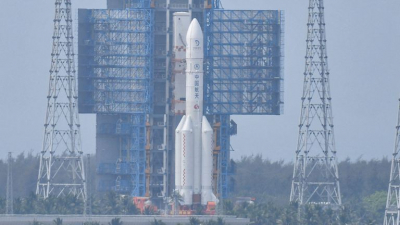Decoding the Complexities and Charting a Course for U.S. Leadership
As China expands its influence across Southeast Asia, the United States faces a critical challenge in maintaining its position as a key player in the region. With a decade of journalistic experience in navigating geopolitical intricacies, it's evident that countering China's sway requires a nuanced and multifaceted strategy. This article delves into the depths of this geopolitical puzzle, examining the various dimensions of China's influence and proposing a strategic blueprint for the U.S. to regain its footing in Southeast Asia.
Understanding China's Approach
China's rise in Southeast Asia is not merely a matter of economic prowess; it's a calculated strategy encompassing diplomatic maneuvers, infrastructure projects, and military assertiveness. Beijing's Belt and Road Initiative (BRI) serves as a cornerstone of its regional engagement, offering infrastructure investments that come with political leverage. Additionally, China's increasing naval presence in the South China Sea raises concerns about freedom of navigation and territorial disputes, further complicating the geopolitical landscape.
Amidst China's growing clout, the U.S. confronts several challenges in maintaining its influence in Southeast Asia. Historically, Washington's engagement in the region has been sporadic, lacking the sustained attention needed to compete effectively with China's long-term vision. Furthermore, recent shifts in U.S. foreign policy priorities have raised doubts among regional allies about America's commitment to the region's security and prosperity.
To counter China's influence in Southeast Asia, the U.S. must adopt a comprehensive strategy that addresses diplomatic, economic, and security dimensions. Firstly, diplomatic efforts should focus on strengthening alliances with regional partners and fostering multilateral frameworks to address common challenges, such as maritime security and economic development. Additionally, the U.S. should enhance its economic engagement by offering alternatives to China's BRI through transparent and sustainable infrastructure investments.
Moreover, the U.S. must bolster its security presence in the region to reassure allies and deter potential aggression. This entails enhancing military cooperation through joint exercises, capacity-building initiatives, and the provision of defense assistance. However, it's imperative for the U.S. to pursue these security measures in a manner that does not exacerbate tensions or escalate conflicts with China.
In addition to traditional diplomatic and military approaches, the U.S. should leverage its soft power assets to win hearts and minds in Southeast Asia. This involves promoting educational and cultural exchanges, supporting civil society initiatives, and championing democratic values and human rights. By investing in people-to-people ties, the U.S. can cultivate long-term relationships that transcend geopolitical rivalries.
Countering China's influence in Southeast Asia requires a strategic recalibration of U.S. engagement in the region. By understanding the complexities of China's approach and leveraging its own strengths, the U.S. can reclaim its position as a leading partner for prosperity and stability in Southeast Asia. However, success will hinge on sustained commitment, diplomatic finesse, and a willingness to adapt to evolving regional dynamics.
In the complex game of geopolitical influence in Southeast Asia, the United States finds itself at a critical juncture. As China expands its presence and influence across the region through economic, diplomatic, and military means, the U.S. must respond with a nuanced and multifaceted strategy.
This article has outlined key dimensions of China's approach, highlighting the challenges it poses to U.S. interests in Southeast Asia. From the Belt and Road Initiative to assertive actions in the South China Sea, China's strategy is multifaceted and ambitious.
To counter China's influence effectively, the U.S. must adopt a comprehensive approach that encompasses diplomatic, economic, security, and soft power elements. Strengthening alliances, offering alternative economic pathways, enhancing security cooperation, and investing in people-to-people ties are all essential components of this strategy.
However, success will not come easily. It will require sustained commitment, diplomatic finesse, and a willingness to adapt to evolving regional dynamics. By understanding the complexities of the geopolitical landscape and leveraging its own strengths, the United States can regain its position as a leading partner for prosperity and stability in Southeast Asia. Ultimately, the future of the region will be shaped by the strategic choices made by the U.S. and its allies in the coming years.






